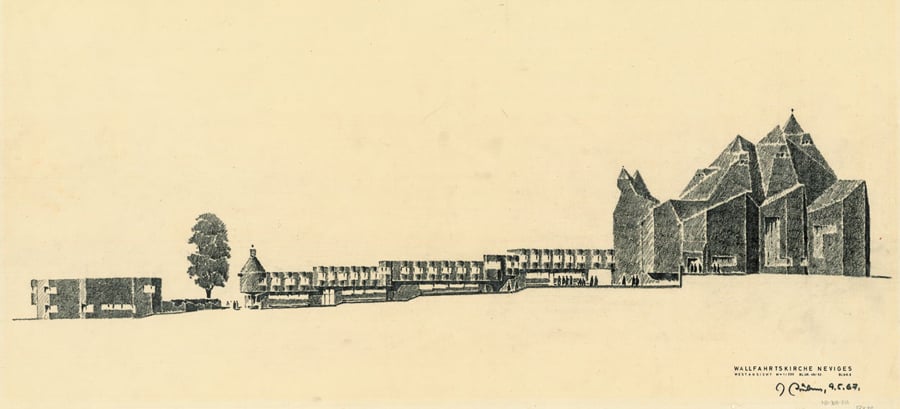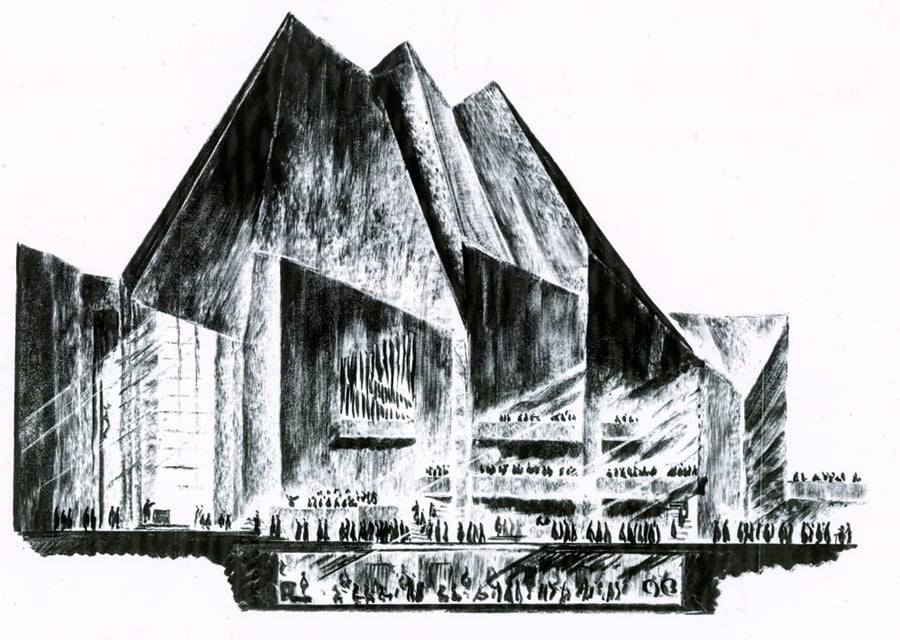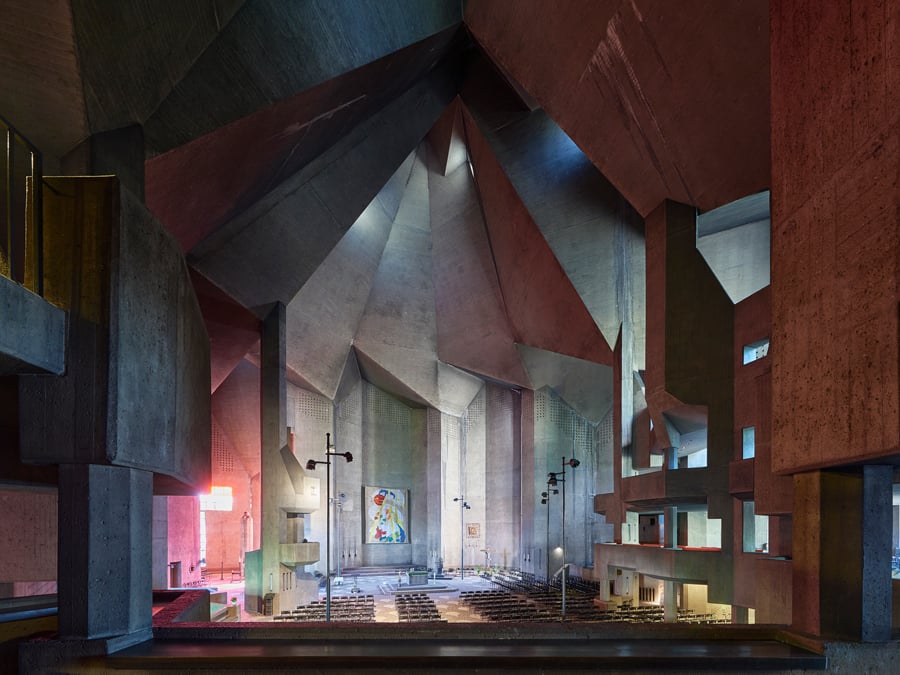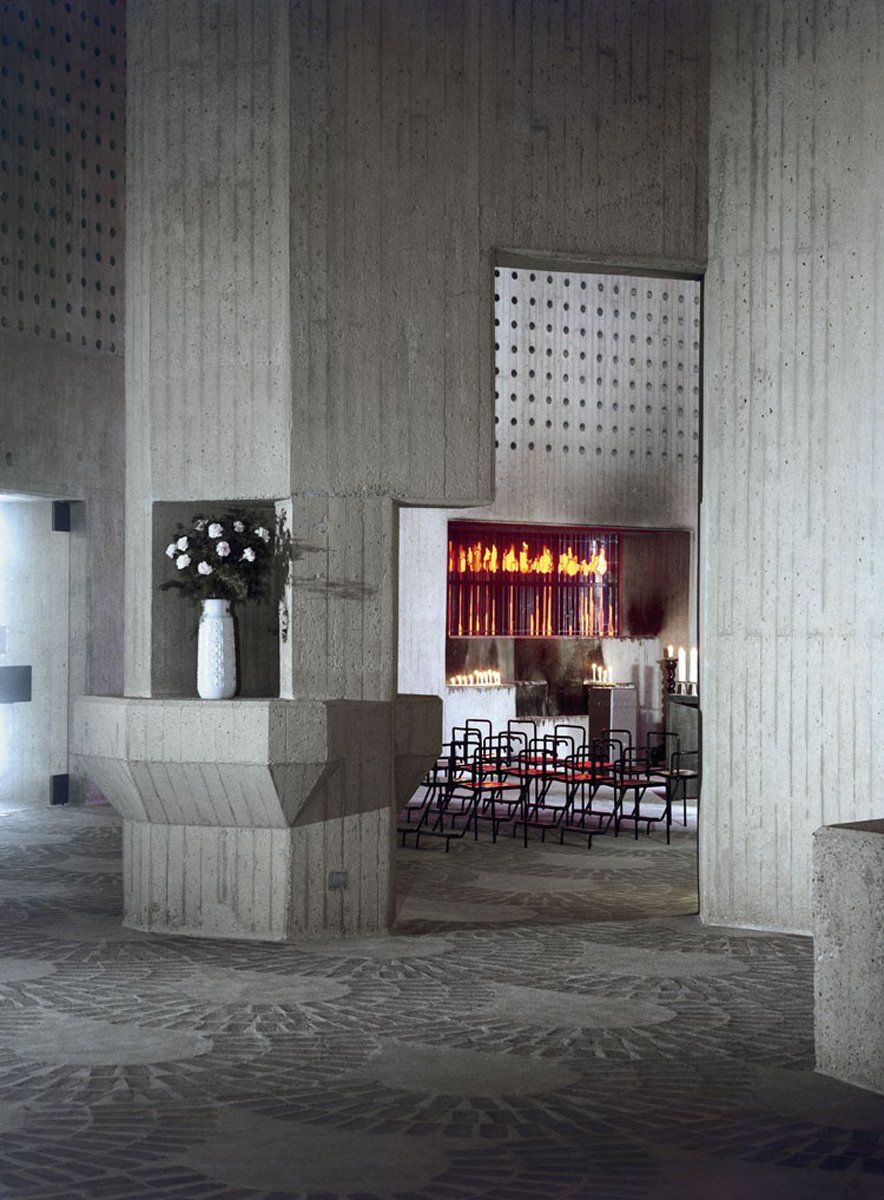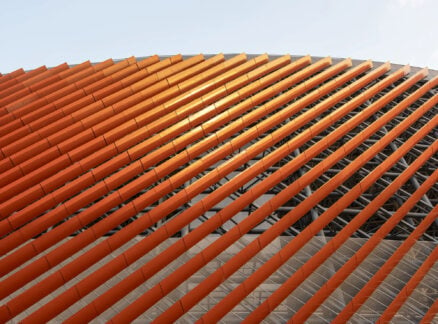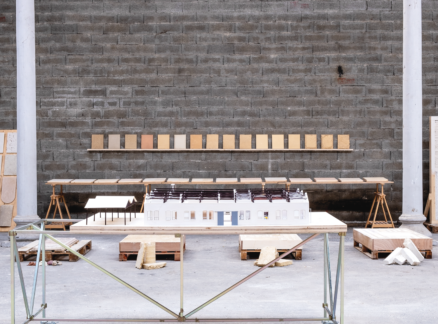
March 4, 2020
As Gottfried Böhm Turns 100, an Exhibition Foregrounds His Concrete Religious Architecture
Kicking off the nationwide celebrations, Böhm100 in Frankfurt presents the Pritzker Prize–winner’s 1968 Neviges Cathedral in western Germany.
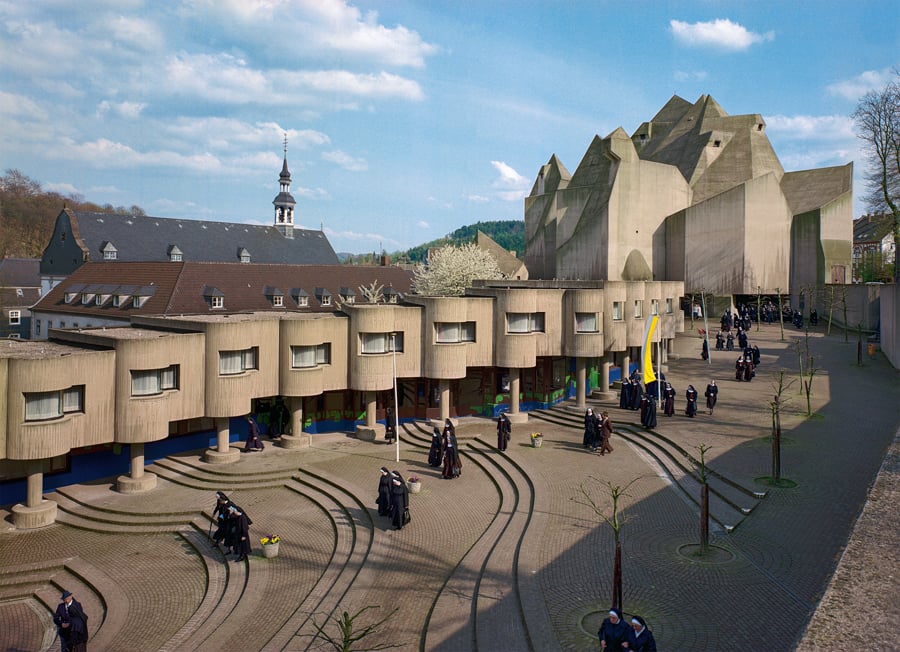
Gottfried Böhm is one of only two German architects to win the Pritzker Prize. While Frei Otto, the other awardee, died in 2015, Böhm just celebrated his 100th birthday in January. That centenary has served as the basis of a varied program throughout the country called Böhm100, dedicated to Böhm and his many works. To kick off the celebrations, the German Architecture Museum in Frankfurt is showing an exhibition that focuses on one major project: the Mariendom, a spectacular Brutalist concrete church built in 1968 in Neviges, near Düsseldorf.
Though Böhm has built many churches in his lifetime—it runs in the family, as his father Dominikus was a well-known church architect—the Mariendom is one of his key works and one of the most spectacular buildings of 20th-century German architecture. Resembling a giant flower or crystal, the solid concrete roofscape rises above the town’s picturesque, pitched-roof houses. Böhm himself never gave an explanation for the sculptural form he chose; instead, he’s enjoyed the many associations and nicknames it has gathered over the years, from “God’s Rock” to the Virgin Mary’s rose to an iceberg, crystal, or tent.
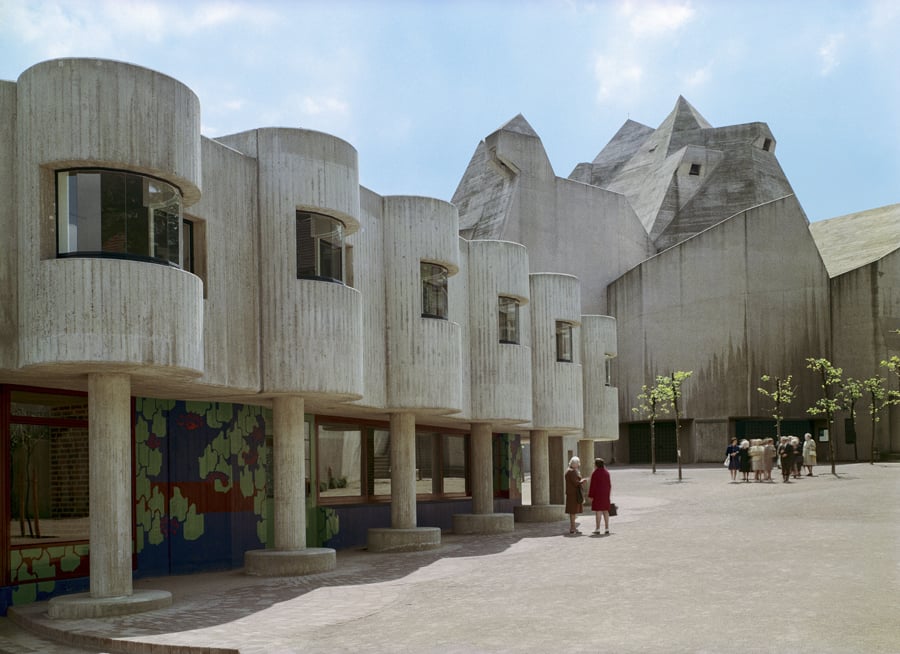
Though Neviges has functioned as a pilgrimage site for centuries, the local Franciscans developed plans for a large church there after World War II. As the legend goes, Böhm’s bold, expressive proposal delighted the Archbishop Frings of Cologne, who was virtually blind when he headed the competition jury. Allegedly, the archbishop liked the feel of Böhm’s model when he felt it with his fingers. Despite heavy criticism from locals and jurors, the Neviges dome was completed on May 22, 1968, after only two years of rapid construction.
Böhm’s original design remains intact today, visitors will find: its outer shell was restored and reinforced in the past decade. Visitors will also see that Böhm placed the out-of-scale, sculptural work as part of an ascending, curved trail that encompasses a nun residency, kids’ center, mission museum, and home for the elderly—all of which he also designed, as part of the competition.

Entering the church feels like entering a dark, giant cave, but once the eyes adjust to the enormous space, many fine details come into view: handrails, built-in furniture, stairs, and railings, are all illuminated by the remarkably colorful church windows. It’s an impressive Gesamtkunstwerk that successfully merges the heavenly scale with the human scale.
The exhibition in Frankfurt illustrates this with floor-to-ceiling photographs that cover the museum’s main presentation space—which itself sits like a dark cavern in the middle of the building. Also included are photos of the church’s construction and some of Böhm’s sketches and models. At the same time, though, it cannot replicate the experience of visiting the church in person. So it’s recommended to visit both the museum and the church, which are separated by a 2.5-hour drive, as part of a different sort of pilgrimage: one of the architecture of Neviges.
Böhm100: The Concrete Cathedral of Neviges is on view at the Deutsches Architekturmuseum in Frankfurt (Main), Germany, through April 26, 2020.
You may also enjoy “At Rem Koolhaas’s Countryside, the Medium Doesn’t Fit the Message—If There is One.”
Would you like to comment on this article? Send your thoughts to: [email protected]
Recent Viewpoints
Viewpoints
Sustainability News Updates for Q2 2025




